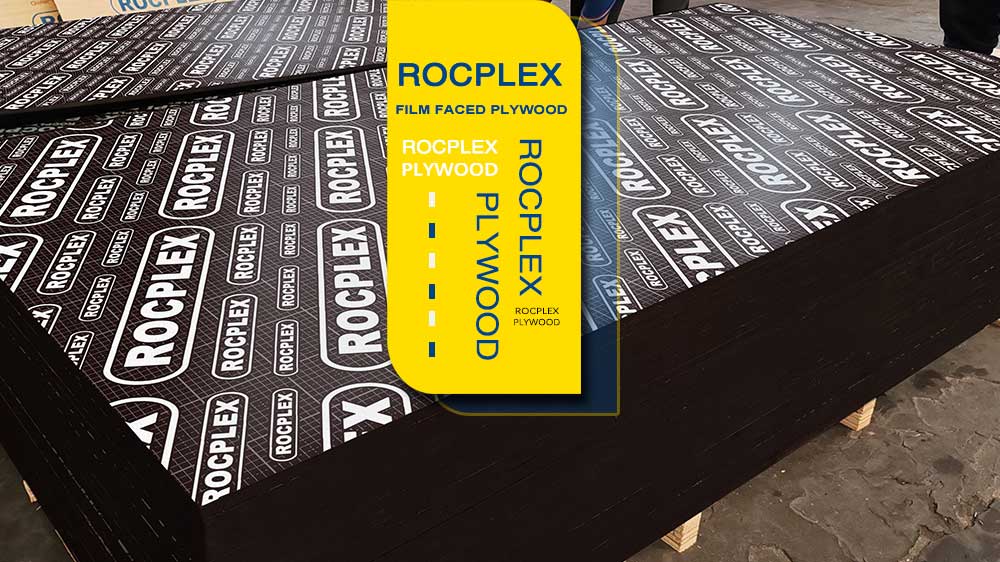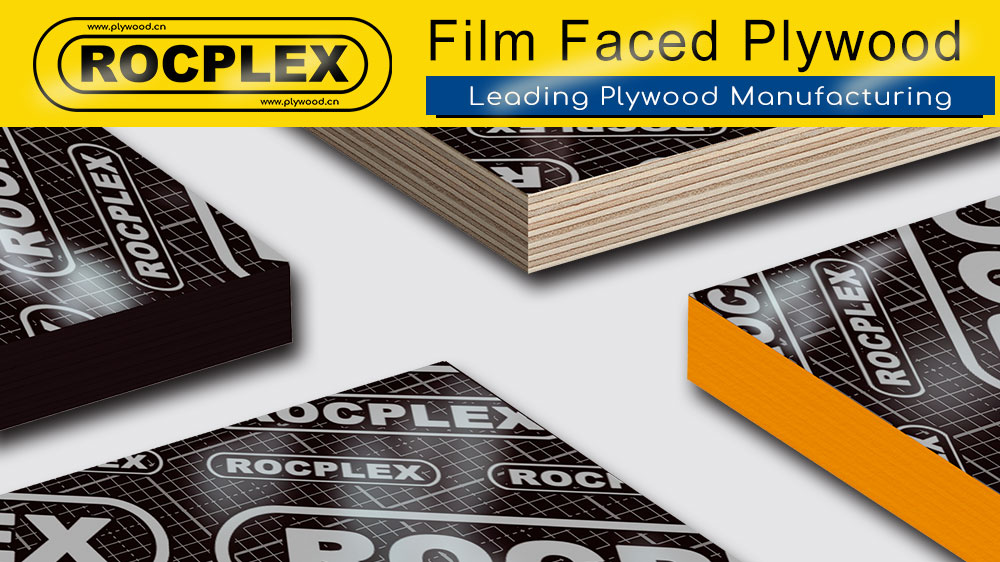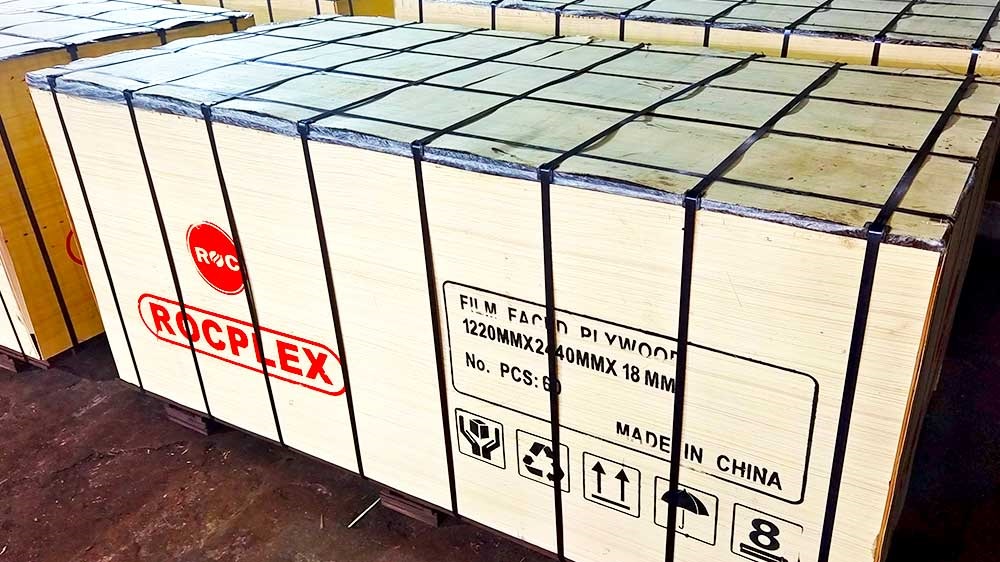What is Phenolic Film Faced Plywood?
Phenolic film faced plywood is a specialized type of plywood used primarily in the construction industry. Its unique feature is the coating of phenolic resin that gives the surface a smooth and water-resistant finish. This film facing makes the plywood highly durable and resistant to harsh weather conditions, chemicals, and physical wear. The material is mainly used in concrete formwork, where it provides a smooth surface that prevents concrete from sticking to the plywood.
The film faced plywood is known for its high strength-to-weight ratio, making it a great option for large construction projects, such as building high-rise structures and bridges. It is a top choice for contractors looking for a reliable and long-lasting material for their formwork and structural needs.
Key Benefits of Phenolic Film Faced Plywood
1. Durability and Strength
One of the primary reasons phenolic film faced plywood is favored in construction is its remarkable durability. The phenolic resin film provides the plywood with an extra layer of protection, making it resistant to moisture, chemical damage, and physical wear. This added strength allows the plywood to withstand heavy loads, making it ideal for concrete formwork.
The robust nature of this material means it can endure multiple uses in demanding environments. Whether you’re working on large construction projects or looking for long-lasting formwork solutions, phenolic plywood ensures that your investment will last longer than other types of plywood.
2. Water Resistance
Phenolic film faced plywood is highly resistant to water, a critical feature when used in outdoor construction or areas exposed to moisture. The phenolic resin film acts as a protective barrier, preventing water absorption and the associated problems of swelling and warping. This water-resistant property ensures that the plywood maintains its integrity even in damp conditions, contributing to the overall longevity and reliability of the material.
3. Smooth Surface Finish
Another key benefit of phenolic film face plywood is its smooth surface. This is particularly important in concrete formwork. A smooth finish ensures that the concrete does not stick to the plywood when it sets. This feature helps in the easy removal of the formwork. It also results in a clean, polished concrete surface. As a result, the need for additional finishing work is reduced.
4. Versatility in Application
Phenolic plywood is incredibly versatile. In addition to its use in concrete formwork, it is also suitable for a wide range of other applications, including the construction of scaffolding, wall panels, and flooring. Its strength and resistance to harsh conditions make it a go-to material in industries where durability is a must.
Comparing Phenolic Film Faced Plywood to Other Types of Plywood
1. Phenolic Film Faced Plywood vs. Standard Plywood
The main difference between phenolic film face plywood and standard plywood lies in the surface treatment and the level of durability. While standard plywood is less expensive, it does not offer the same level of resistance to moisture and wear. Phenolic plywood is treated with a layer of phenolic resin, which makes it more durable, water-resistant, and suited for demanding environments.
For construction projects, especially those that involve heavy concrete pouring or exposure to moisture, phenolic film face plywood is the clear choice over regular plywood.
2. Phenolic Film Faced Plywood vs. Marine Plywood
Marine plywood is another popular option for projects involving water exposure. While marine plywood is designed to withstand moist conditions, it lacks the smooth, high-performance surface provided by phenolic film face plywood. For concrete formwork applications, phenolic plywood outperforms marine plywood in terms of durability and surface finish.
Although marine plywood may be suitable for boat building and other marine applications, phenolic film-faced plywood excels in high-demand construction environments. This makes it the better choice for formwork, scaffolding, and other heavy-duty applications.
Factors That Affect the Cost of Phenolic Film Faced Plywood
1. Material Quality
The cost of phenolic film face plywood can vary depending on the quality of the wood used and the type of resin applied. Higher-quality wood, such as hardwood, tends to drive up the price of the plywood. The cost of film faced plywood also increases with the application of premium phenolic resin coatings, which improve its durability and performance.
2. Thickness of Plywood Sheets
The thickness of the plywood sheet plays a significant role in its overall cost. Thicker sheets generally cost more because they require more raw material and labor to produce. Phenolic film faced plywood comes in a range of thicknesses, and selecting the right thickness for your project can have a significant impact on your overall costs.
3. Regional Price Variations
Prices for phenolic plywood can vary by region, depending on local production capabilities, shipping costs, and regional demand. In areas where film faced plywood is widely used for construction, the price may be more competitive. However, regions with limited access to this material may see higher prices due to shipping and import costs.
How to Choose the Right Phenolic Film Faced Plywood for Your Project
1. Consider the Project Requirements
When choosing phenolic film faced plywood, it is important to evaluate the specific needs of your project. For concrete formwork shuttering plywood, you’ll want to select plywood with a smooth finish and strong water-resistant properties. For larger construction projects, consider opting for film faced plywood with higher thickness to handle heavy loads and ensure long-lasting durability.
Additionally, consider whether the plywood will be used in outdoor or indoor applications. This will influence the level of weather resistance required. If you are working in a high-humidity environment or expect frequent exposure to water, make sure the phenolic plywood you choose has extra layers of phenolic resin for enhanced protection.
2. Evaluate the Available Thickness Options
Phenolic film faced plywood is available in a range of thicknesses, from 4mm to 18mm or even thicker for more heavy-duty applications. The thickness you select will depend on the load-bearing requirements of your project.
For lightweight structures or smaller formwork applications, thinner plywood might suffice. However, for large-scale concrete casting, a thicker formwork plywood sheet is recommended to ensure optimal strength and resistance. Keep in mind that thicker sheets will generally come at a higher price due to the additional material required during production.
3. Check the Surface Quality
Since phenolic film faced plywood is often used in concrete formwork, the quality of the surface is crucial. The smoother the surface, the easier it will be to release the concrete from the formwork without damaging the structure. High-quality film faced plywood will have a consistent, smooth finish that not only improves the ease of concrete removal but also enhances the final aesthetic of the project.
Make sure that the plywood you choose has minimal defects, such as knots or voids, which could impact its performance and durability over time. Inspecting the surface quality is essential for ensuring that your phenolic plywood will deliver the desired results throughout the project.
4. Compare Prices and Suppliers
Once you’ve determined the specifications you need, it is time to compare prices and suppliers. Different manufacturers and suppliers may offer varying prices based on material quality, thickness, and regional availability.
By sourcing quotes from multiple suppliers, you can find the best deal that fits your budget while ensuring the phenolic plywood meets your project’s requirements. Be mindful of the overall cost, but don’t compromise on the material’s quality. After all, a low-cost option that doesn’t perform well can lead to higher costs in repairs and replacements in the long term.
5. Consider the Environmental Impact
As sustainability becomes increasingly important, it is worth considering the environmental impact of the materials you select. Some formwork plywood may be produced using sustainable forestry practices and eco-friendly resin treatments. Check with your supplier to see if they offer environmentally-friendly plywood options that align with your project’s green building goals.
Choosing responsibly sourced plywood can not only improve the environmental footprint of your project but can also enhance its reputation in industries where sustainability is a priority.
Common Misconceptions About Phenolic Film Faced Plywood
1. Phenolic Film Faced Plywood is Too Expensive
One of the most common misconceptions about phenolic film-faced plywood is that it is too expensive for most construction budgets. While it may have a higher initial cost compared to standard plywood, its long-term durability makes it a cost-effective solution. It can withstand harsh conditions, which makes it ideal for high-demand applications. By reducing the need for frequent replacements, phenolic plywood can save builders and contractors substantial amounts of money over its lifespan.
Moreover, its ease of use, particularly in formwork applications, can help speed up construction processes, leading to further savings in labor costs. When considering the cost of plywood sheets, factor in both the upfront price and the long-term benefits.
2. All Phenolic Film Faced Plywood is the Same
Not all phenolic plywood products are created equal. There can be significant variations in the quality of phenolic film face plywood, depending on the manufacturer and the materials used. Some may offer thicker coatings of phenolic resin for added durability, while others may have a thinner coat that may not perform as well in demanding environments.
It is essential to research the specifications of the film faced plywood you are considering and verify the manufacturer’s claims. Always request detailed information about the plywood’s features, such as resin thickness, the type of wood used, and its suitability for your specific project needs.
3. Phenolic Film Faced Plywood is Only for Concrete Formwork
While phenolic film face plywood is commonly used for concrete formwork, it is not limited to this application. Its durability and versatility make it suitable for a variety of other uses, including scaffolding, temporary flooring, and wall panels. The water-resistant and wear-resistant properties of the phenolic plywood allow it to perform exceptionally well in both outdoor and industrial environments.
If you’re involved in any construction projects that require durable, long-lasting materials, phenolic film faced plywood may be the ideal option.
Phenolic film faced plywood is the top choice for durable, high-performance construction
Phenolic film-faced plywood offers unmatched durability, water resistance, and a smooth surface finish. This makes it the preferred choice for construction projects that require high performance. While its initial cost can be higher than standard plywood, its long-term benefits make it a cost-effective investment. Enhanced strength and versatility make it ideal for heavy-duty applications like concrete formwork.
By carefully considering the specific needs of your project, you can select the right thickness and surface quality. Additionally, comparing prices from various suppliers will help ensure that your project is completed with the highest quality materials. Ultimately, phenolic resin plywood stands out as a reliable and durable solution for construction professionals who prioritize performance, longevity, and safety.
Choose phenolic film faced plywood for your next project to achieve optimal results and ensure a smooth, successful construction process.
Post time: Feb-20-2025




